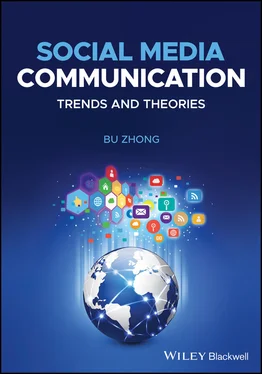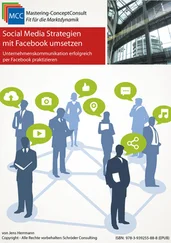Once families started to produce more food than all the members could consume, people could then have time and opportunities to develop specialized knowledge, instead of producing food. When information can be communicated to others in written form, it can also be transmitted to future generations. The amount of knowledge then increased greatly in society, which supported philosophers, mathematicians, artists, and tool inventors, etc., resulting in widespread social changes.
The invention of tools had become one of the driving forces of the agrarian economy. If one single technology can be named in playing a key role in the new economy, it is the invention of the plough, though some may argue, reasonably, that other tools, such as the sickle or flail, were also essential innovations. In this sense, farming served as a source of motivation for tool invention. Equipped with the new tools, people could cultivate more land and harvest more food. A broad social use of the plough and other tools, along with some social factors, led human beings to the threshold of a new civilization era – the era of industrial civilization, which was sparked by the Industrial Revolution, starting in the late eighteenth century.
2. Industrial Civilization
The Industrial Revolution, marking another turning point in the history of human civilization, altered almost every aspect of human society, largely because of the advances in the technologies of industry. Multiple technological innovations at that time had liberated human beings by diminishing physical labor with mechanical work, supporting the injection of capitalist practices and principles into what had been an agrarian society. Human beings thus entered into the era of industrial civilization, the product of the Industrial Revolution.
Historians (e.g., Braudel, 1981) tend to agree that the preindustrial era, marking the beginning of capitalism, started in 1440, thanks to two new technologies – navigation technology, resulting in geographic discoveries, and Gutenberg’s invention of printing technology. The latter, in a sense, was even more far-reaching. The broad social access to the printing press made it possible for more people to read and write in Europe, where printed books and manuscripts became less expensive and commonly accessible. Cumulatively, Europe witnessed a record high literacy rate, eventually contributing to the full blossom of the Renaissance.
Broad social access to steam machines, another new technology at that time, terminated the preindustrial era in 1760, and marked the beginning of the industrial civilization era. Some argue that neither Gutenberg nor Watt brought the world any new inventions, but instead adaptations of older inventions that existed somewhere else. The Chinese, for instance, had invented and developed movable type printing technology much earlier than Gutenberg. Four hundred years later, Gutenberg repeated, perhaps independently, the Chinese invention and added new values to the technology, making printing more mechanically efficient (Calder, 1962). However, what Gutenberg had contributed was broad social access to books, first in Europe and later in the rest of the world.
Watt’s invention was not new either, but he added automatic control of rotary speed, a big improvement, to older steam machines that were unstable, unreliable, and unsafe. Again, Watt’s contribution resulted in broad social access to the safe and reliable use of steam power, which would not easily explode like before. Mass media, both print and broadcast, in this era grew more powerful. The set of systematic changes to human society eventually amounted to a new era of civilization – information civilization, which is highly significant as a global civilization, integrating all parts of the globe into a single unit for the first time.
3. Information Civilization
Since the 1960s, numerous scholars have contributed insights on the subjects of the information society and the informational revolution, including Bell (1973), Castells (2000), Drucker (1993), McLuhan (1964), Mattelart (2003), Naisbitt (1982), and Toffler (1980). Though holding diverse views, analyses, and research backgrounds, they share the same belief that we are living in times of an information revolution that is leading us into a new civilization era, which is dramatically different from the preceding era of industrial civilization. If the Industrial Revolution had significantly replaced physical labor with mechanical work, the information revolution brings about the dematerialization of work: automation, computerization, and robotization relieving humans from heavy or tedious work (Wierzbicki, 2007).
This new epoch is the era of information civilization, in which information plays a more essential role than industrial products. The main feature of the era is its high information intensity of all activities. Dijk (2012) argues that in such a society, “the information intensity of all activities becomes so high that it leads to:
an organization of society based on science, rationality and reflexivity;
an economy with all values and sectors, even the agrarian and industrial sectors, increasingly characterized by information production;
a labor market with a majority of functions largely or completely based on tasks of information processing requiring knowledge and higher education;
a culture dominated by media and information products with their signs, symbols and meanings” (p. 19).
It is generally accepted that 1980 marked the beginning of the information civilization era due to the improvement of personal computers (PC), network technology, and new protocols of computer networks (2007). The broad civil use of information technology, especially internet technologies, started with the definition of seven ISO/OSI and TCP/IP protocols in the 1980s, which by chance paralleled the development of the first personal computers (Wierzbicki & Nakamori, 2005). Broad access to PCs, network technology, and other information technology laid the ground for the development of social media.
The technology of the industrial civilization era was developed to such a degree that, for the first time in history, it promised the possibility of freeing people from hard work, while, on the other hand, it created the very real possibility of the total destruction of life on the Earth. Entire societies have become blinded by the seemingly unlimited power over nature given to them by industrial technology, leading to a great overexploitation of natural resources and degradation of the natural environment (Wierzbicki, 2007, p. 391).
In this era, information has become the fundamental productive resource, sometimes more important than raw materials or energy in the industrial economy. In the preindustrial and the industrial eras, the dominant medium for recording human heritage was printed books. Informational technology will soon make possible the fully multimedia recording of the human heritage; in other words, instead of a book, we will have electronic records including films, music, interactive exercises, and virtual environments. This change will have impacts exceeding that of Gutenberg’s printing technology.
Like the rise of information civilization, a new era with distinct features follows, irresistibly, by the end of the second millennium. This is called the era of internet civilization, which is becoming the mainframe of the newly established networked society that is shaped socially, culturally, economically, and psychologically by media technologies, particularly in the areas of network technology and information and communication technologies.
4. Internet Civilization
At the dawn of the third millennium, networked society, characterized by a broad use of network technology and information and communication technology, has fully risen on a global scale (Castells, 2010), marking the beginning of the internet civilization era. “Networks are becoming the nervous system of the society,” having more influence on the entire society and personal lives than the road system for transportation of people and goods (Dijk, 2012, p.2). The social use of ICT has made wide-ranging connectivity possible, including broadband, the cloud, and mobile technology. When people are brought closer like never before, their joint effort not only redefines boundaries of geopolitical entities, but also makes significant economic, social, and environmental progress.
Читать дальше












